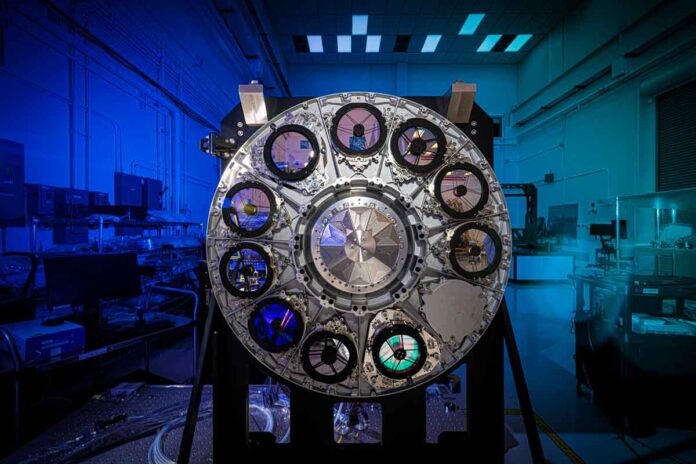Engineers from Ball Aerospace have installed and aligned the element wheel assembly into the telescope’s Wide Field Instrument. Ball Aerospace is one of NASA’s industrial partners. When Roman launches in May 2027, it will contain eight science filters, two dispersive elements such as a grism and prism and a “blank” element. These elements will help scientists solve some of the most profound mysteries in astrophysics.
Light will pass through the element wheel after being reflected and focused by Roman’s primary and secondary mirrors. The focused and filtered light will then be directed to a large detector array. There an image will be produced. The science filters will allow astronomers to choose specific wavelengths of light for their observations based on what they are looking for.
The grism and prism are spectroscopy tools. They are used to divide light from cosmic objects into different colours. These rainbow-like measurements contain unique signatures of the sources that provide information about their nature. These measurements are known as spectra.
Astronomers will be able to measure the motion of thousands of galaxies through space. It will allow them to determine how fast the universe has expanded over time. This can aid in determining the nature of dark energy and also the enigmatic cosmic pressure that is hastening the universe’s expansion.
Optimax, Jenoptik and NASA’s Goddard Space Flight Center created and tested the grism and prism to ensure they met Roman’s stringent requirements. The team created space-like conditions by lowering the temperature to around minus 190 degrees Fahrenheit in a cryo-vacuum vessel. Engineers had to confirm if the optics will work as planned at Roman’s super-cold operating temperature. Because most materials expand when heated and compress when cooled.
The grism and prism both passed with minimal distortion in test images. Now astronomers will use these components to investigate some of the universe’s greatest mysteries.

